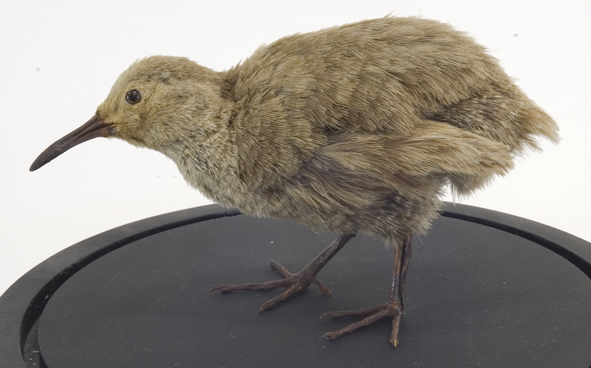Chatham rail on:
[Wikipedia]
[Google]
[Amazon]
The Chatham rail (''Cabalus modestus'') is an extinct flightless species of 
 The Chatham rail and the
The Chatham rail and the 
File:MA I264486 TePapa Cabalus-modestus-Hutton full.jpg
File:MA I264487 TePapa Cabalus-modestus-Hutton full.jpg
File:MA I359976 TePapa Cabalus-modestus-Hutton full.jpg, Lateral view
File:MA I359977 TePapa Cabalus-modestus-Hutton full.jpg, Dorsal view
File:MA I359978 TePapa Cabalus-modestus-Hutton full.jpg, Ventral view
File:MA I359979 TePapa Cabalus-modestus-Hutton full.jpg, Oblique view
Specimens from the Museum of New Zealand Te Papa Tongarewa.Specimens from the Auckland War Memorial Museum Tāmaki Paenga Hira
Cabalus Bird extinctions since 1500 Extinct birds of the Chatham Islands Taxa named by Frederick Hutton (scientist) Birds described in 1872 Taxonomy articles created by Polbot {{Gruiformes-stub
bird
Birds are a group of warm-blooded vertebrates constituting the class Aves (), characterised by feathers, toothless beaked jaws, the laying of hard-shelled eggs, a high metabolic rate, a four-chambered heart, and a strong yet lightweig ...
in the family Rallidae
The rails, or Rallidae, are a large cosmopolitan family of small- to medium-sized, ground-living birds. The family exhibits considerable diversity and includes the crakes, coots, and gallinules. Many species are associated with wetlands, althou ...
. It was endemic
Endemism is the state of a species being found in a single defined geographic location, such as an island, state, nation, country or other defined zone; organisms that are indigenous to a place are not endemic to it if they are also found else ...
to Chatham, Mangere and Pitt Island
Pitt Island is the second largest island in the Chatham Archipelago, New Zealand. It is called ''Rangiauria'' in Māori and ''Rangiaotea'' in ''Moriori.Government of New Zealand, Dept. of Conservation (1999) Chatham IslandsConservation Managem ...
s, in the Chatham archipelago of New Zealand
New Zealand ( mi, Aotearoa ) is an island country in the southwestern Pacific Ocean. It consists of two main landmasses—the North Island () and the South Island ()—and over 700 smaller islands. It is the sixth-largest island count ...
.

 The Chatham rail and the
The Chatham rail and the Dieffenbach's rail
Dieffenbach's rail (Moriori: ''meriki'' or ''mehoriki'', ''Hypotaenidia dieffenbachii'') is an extinct flightless species of bird from the family Rallidae. It was endemic to the Chatham Islands. The only recorded living specimen of Dieffenbach ...
, both flightless, were sympatric on the Chatham Islands
The Chatham Islands ( ) (Moriori: ''Rēkohu'', 'Misty Sun'; mi, Wharekauri) are an archipelago in the Pacific Ocean about east of New Zealand's South Island. They are administered as part of New Zealand. The archipelago consists of about te ...
. Their sympatry suggests parallel evolution
Parallel evolution is the similar development of a trait in distinct species that are not closely related, but share a similar original trait in response to similar evolutionary pressure.Zhang, J. and Kumar, S. 1997Detection of convergent and paral ...
after separate colonisation of the Chatham Islands by a common volant ancestor. A genetic analysis from 1997 suggested that the two were sister taxa
In phylogenetics, a sister group or sister taxon, also called an adelphotaxon, comprises the closest relative(s) of another given unit in an evolutionary tree.
Definition
The expression is most easily illustrated by a cladogram:
Taxon A and ...
. However more recent genetic analysis finds them to not be closely related within the ''Gallirallus'' radition, with a 2014 analysis finding the Chatham rail being sister taxon to the New Caledonian rail
The New Caledonian rail (''Cabalus lafresnayanus'') is a large and drab flightless rail that is found on the island of New Caledonia in the Pacific. It is a dull brown above, with grey underparts, and has a yellowish, downward-curving bill. No ...
instead.
The Chatham rail was first discovered on Mangere in 1871, and 26 specimens collected there are known from museum collections. It became extinct on the island between 1896 and 1900. The species is also known from 19th century bones from Chatham and Pitt Islands. It is likely to have occurred in scrubland and tussock grass.

Extinction
Its extinction was presumably caused by predation by rats and cats (which were introduced in the 1890s),habitat destruction
Habitat destruction (also termed habitat loss and habitat reduction) is the process by which a natural habitat becomes incapable of supporting its native species. The organisms that previously inhabited the site are displaced or dead, thereby ...
to provide sheep
Sheep or domestic sheep (''Ovis aries'') are domesticated, ruminant mammals typically kept as livestock. Although the term ''sheep'' can apply to other species in the genus '' Ovis'', in everyday usage it almost always refers to domesticated ...
pasture (which destroyed all the island's bush and tussock grass by 1900), and from grazing by goats and rabbits. On Chatham and Pitt Islands, Olson has suggested that its extinction resulted from competition with the larger Dieffenbach's rail
Dieffenbach's rail (Moriori: ''meriki'' or ''mehoriki'', ''Hypotaenidia dieffenbachii'') is an extinct flightless species of bird from the family Rallidae. It was endemic to the Chatham Islands. The only recorded living specimen of Dieffenbach ...
(also extinct), but this has been refuted later when the two species have been shown to have been sympatric on Mangere.Tennyson and Millener (1994)References
External links
*Specimens from the Museum of New Zealand Te Papa Tongarewa.
Cabalus Bird extinctions since 1500 Extinct birds of the Chatham Islands Taxa named by Frederick Hutton (scientist) Birds described in 1872 Taxonomy articles created by Polbot {{Gruiformes-stub